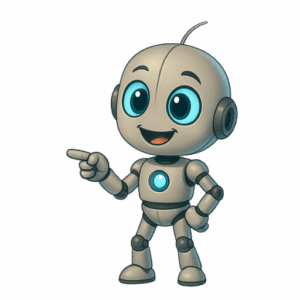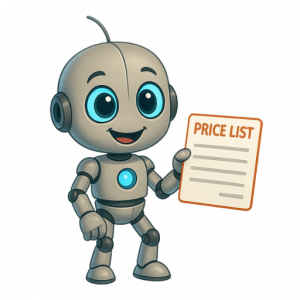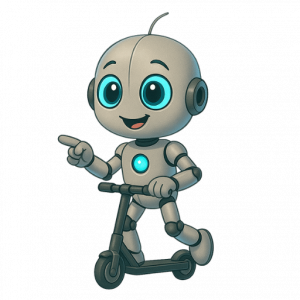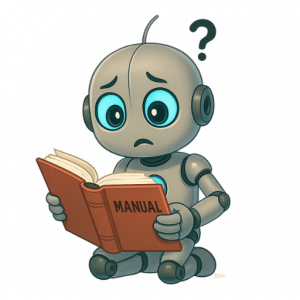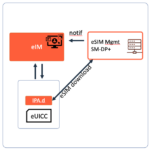
When is the right time to jump into the new eSIM for IoT SGP.32 Specification?
April 18, 2023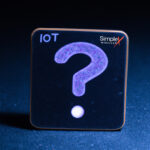
There are two types of clients IPA.d and IPA.e in SGP.32 eSIM specifications. What are they and which one is better?
April 27, 202314 of the most common use-cases for IoT Connectivity and the biggest companies in each category.
Simplex Wireless has opened up a world of possibilities for various industries by providing reliable and secure communication between devices. Here are some typical use cases that leverage cellular IoT connectivity:
- Smart Agriculture: Cellular IoT connectivity has become a game-changer for the agriculture industry. By using connected sensors, weather stations, and devices, farmers can access real-time data on various parameters, such as soil moisture, temperature, humidity, and nutrient levels. This information allows farmers to make more informed decisions, optimizing the use of resources like water and fertilizers, leading to improved crop yield and reduced waste. Additionally, cellular IoT enables remote control and monitoring of agricultural equipment, such as irrigation systems and autonomous tractors, further increasing efficiency and reducing labor costs.
Links to market leading companies in this category: John Deere, Trimble Inc., The Climate Corporation, Semios, Farmers Edge
- Asset Tracking and Fleet Management: Cellular IoT connectivity enables businesses to track their vehicles and assets in real-time. This is achieved through the use of GPS and IoT-enabled devices installed on the vehicles, which transmit data on location, speed, usage, and maintenance status. Fleet managers can use this data to optimize routes, monitor driver behavior, and schedule preventive maintenance, resulting in reduced fuel consumption, lower operational costs, and improved overall efficiency. Asset tracking also helps businesses minimize theft and loss of valuable equipment, while enabling faster recovery in case of misplacement.
Links to market leading companies in this category: Geotab, Samsara, Omnitracs, TomTom Telematics
- Wearables and Healthcare: Cellular IoT connectivity has transformed healthcare by enabling remote monitoring of patients through connected medical devices and wearables. Devices like heart rate monitors, glucose meters, and blood pressure cuffs can transmit data, such as vital signs, location, and patient information, to healthcare providers in real-time. This allows healthcare professionals to monitor patients’ health more closely, provide proactive care, and respond faster to emergencies. In addition, wearables like fitness trackers can help individuals maintain a healthy lifestyle by monitoring their exercise, sleep, and other health-related data.
Links to market leading companies in this category: Fitbit, Apple (Apple Watch),Garmin, Xiaomi, Philips
- Energy Management and Smart Grids: Cellular IoT connectivity plays a vital role in the development and operation of smart grids. Connected sensors and devices can be used to monitor and control energy consumption, distribution, and generation in real-time. This enables more efficient grid management, demand response programs, and integration of renewable energy sources, such as solar and wind. Real-time data from IoT devices can help utilities detect and resolve issues like power outages and grid imbalances more quickly, resulting in improved reliability and reduced costs.
Links to market leading companies in this category: Siemens, General Electric, ABB, Schneider Electric, Itron
- Environmental Monitoring: Cellular IoT connectivity can be used to monitor environmental conditions, such as air quality, water levels, and pollution, enabling early detection and response to potential hazards or emergencies. Connected sensors can collect real-time data on parameters like temperature, humidity, pollutant levels, and radiation, providing valuable insights into environmental trends and risks. This information can be used by government agencies, researchers, and businesses to develop more effective strategies for pollution control, natural resource management, and disaster preparedness.
Links to market leading companies in this category: Aclima, Enevo, Libelium, Aeroqual, Pessl Instruments
- Logistics and Cold Chain Management: Cellular IoT connectivity plays a crucial role in ensuring the quality and safety of perishable goods during transportation and storage. By using IoT-enabled sensors and devices, businesses can monitor temperature, humidity, and other parameters in real-time, ensuring optimal conditions are maintained throughout the supply chain. This helps minimize spoilage, maintain product quality, and reduce the risk of contamination. Real-time data also enables businesses to optimize logistics processes, such as routing and inventory management, leading to improved efficiency and reduced costs.
Links to market leading companies in this category: Sensitech, Controlant, ORBCOMM, Monnit, Berlinger & Co. AG, ThingsMatrix
- Insurance Telematics: Usage-based insurance (UBI) models leverage cellular IoT connectivity to track driver behavior and vehicle usage. By installing IoT-enabled devices in vehicles, insurers can collect real-time data on parameters like speed, acceleration, braking, and mileage. This data allows insurance companies to offer personalized premiums and services based on actual driving habits, rather than relying on traditional factors like age, gender, and location. UBI models can encourage safer driving and help insurers better assess and manage risk.
Links to market leading companies in this category: Octo Telematics, Cambridge Mobile Telematics, IMS, CalAmp, Viasat Group
- Remote Monitoring of Offshore and Remote Facilities: Cellular IoT connectivity enables the efficient management and monitoring of equipment in remote and offshore facilities, such as oil rigs, wind turbines, and solar farms. Connected sensors and devices can transmit real-time data on equipment performance, environmental conditions, and potential hazards, allowing operators to monitor and control operations remotely. This helps reduce the need for on-site personnel, lowers maintenance costs, and enables faster response to incidents or malfunctions. Additionally, predictive maintenance can be implemented, reducing downtime and increasing overall productivity.
Links to market leading companies in this category: Honeywell, Emerson, Rockwell Automation
- Vending Machines and Point-of-Sale Terminals: Cellular IoT connectivity allows businesses to remotely manage vending machines and point-of-sale (POS) terminals. By connecting these devices to the cellular IoT network, businesses can track inventory levels, monitor sales data, and identify patterns in real-time. This enables automated restocking, targeted marketing efforts, and optimization of product offerings based on customer preferences. Additionally, cellular IoT connectivity can facilitate secure payment processing and provide businesses with valuable insights into customer behavior and trends.
Links to market leading companies in this category: Ingenico, Verifone, PAX Technology, Cantaloupe, Nayax
- Wildlife Monitoring and Conservation: Cellular IoT connectivity has become an essential tool for wildlife monitoring and conservation efforts. By equipping animals with IoT-enabled tracking devices, such as GPS collars or tags, researchers and conservationists can monitor their movements, behavior, and habitats in real-time. This data can be used to inform conservation strategies, identify threats to endangered species, and track the impact of human activities on wildlife populations. Cellular IoT connectivity also enables real-time alerts and remote monitoring, allowing for faster response to incidents like poaching or habitat destruction.
Links to market leading companies in this category: Wildlife Computers, Lotek, Vectronic Aerospace
- Connected Drones and Robotics: Cellular IoT connectivity enhances the communication and control capabilities of drones and robotic devices. By connecting these devices to the cellular IoT network, real-time data transmission, remote operation, and autonomous decision-making can be achieved. This enables applications like aerial inspections, precision agriculture, search and rescue operations, and delivery services. Cellular IoT connectivity can also facilitate collaboration between multiple drones or robots, allowing them to work together more efficiently and effectively.
Links to market leading companies in this category: DJI, Parrot, Boston Dynamics, FLIR Systems, Yuneec
- Smart Water Management: Cellular IoT connectivity plays a significant role in optimizing water resource management. By using connected sensors and devices, water usage, quality, and distribution can be monitored and controlled in real-time. This helps to prevent water waste, detect leaks or contamination early, and ensure efficient allocation of resources. Smart water management solutions can also enable more accurate billing and promote water conservation efforts by providing consumers with real-time data on their water usage.
Links to market leading companies in this category: Xylem, SUEZ, Mueller Water Products, Badger Meter, Neptune Technology Group
- E-health and Telemedicine: Cellular IoT connectivity has revolutionized the healthcare industry by enabling e-health and telemedicine services. Connected medical devices and wearables can transmit patient data to healthcare providers, allowing them to monitor patient health remotely and provide consultations via video or audio calls. This improves access to care, especially in remote or underserved areas, and reduces the strain on healthcare facilities. Cellular IoT connectivity also facilitates the collection and analysis of large-scale health data, which can be used to inform public health policies and medical research.
Links to market leading companies in this category: Teladoc Health, Amwell, MDLive, Doctor on Demand, Cerner Corporation
- Disaster Management and Early Warning Systems: Cellular IoT connectivity plays a crucial role in disaster management and the development of early warning systems. By using connected sensors and devices, data on natural disasters like floods, earthquakes, and forest fires can be collected and analyzed in real-time. This enables early detection of potential hazards and more efficient coordination of emergency response efforts, ultimately saving lives and reducing property damage. Cellular IoT connectivity also allows for real-time communication between first responders, government agencies, and affected communities, ensuring a more effective and timely response to disasters.
Links to market leading companies in this category: IBM (The Weather Company), Vaisala, Earth Networks, Pacific Disaster Center (PDC), Meteomatics
Please reach out to our Simplex representatives to learn. More on how we can help and support your business getting connected!


